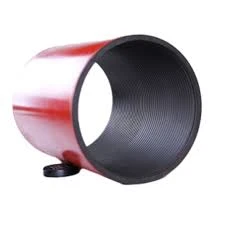- Afrikaans
- Albanian
- Amharic
- Arabic
- Armenian
- Azerbaijani
- Basque
- Belarusian
- Bengali
- Bosnian
- Bulgarian
- Catalan
- Cebuano
- Corsican
- Croatian
- Czech
- Danish
- Dutch
- English
- Esperanto
- Estonian
- Finnish
- French
- Frisian
- Galician
- Georgian
- German
- Greek
- Gujarati
- Haitian Creole
- hausa
- hawaiian
- Hebrew
- Hindi
- Miao
- Hungarian
- Icelandic
- igbo
- Indonesian
- irish
- Italian
- Japanese
- Javanese
- Kannada
- kazakh
- Khmer
- Rwandese
- Korean
- Kurdish
- Kyrgyz
- Lao
- Latin
- Latvian
- Lithuanian
- Luxembourgish
- Macedonian
- Malgashi
- Malay
- Malayalam
- Maltese
- Maori
- Marathi
- Mongolian
- Myanmar
- Nepali
- Norwegian
- Norwegian
- Occitan
- Pashto
- Persian
- Polish
- Portuguese
- Punjabi
- Romanian
- Russian
- Samoan
- Scottish Gaelic
- Serbian
- Sesotho
- Shona
- Sindhi
- Sinhala
- Slovak
- Slovenian
- Somali
- Spanish
- Sundanese
- Swahili
- Swedish
- Tagalog
- Tajik
- Tamil
- Tatar
- Telugu
- Thai
- Turkish
- Turkmen
- Ukrainian
- Urdu
- Uighur
- Uzbek
- Vietnamese
- Welsh
- Bantu
- Yiddish
- Yoruba
- Zulu
stainless steel coupler fittings
Understanding Stainless Steel Coupler Fittings A Comprehensive Guide
Stainless steel coupler fittings are essential components in various piping systems, designed to connect pipes together and ensure the integrity of fluid flow. Widely recognized for their durability and resistance to corrosion, these fittings have become a standard choice across different industries, including construction, manufacturing, and plumbing.
What Are Stainless Steel Coupler Fittings?
Coupler fittings, often referred to as pipe couplings, are utilized to join two lengths of pipe. They come in various sizes, shapes, and configurations to accommodate different types of pipes, including rigid and flexible materials. The primary function of a coupler fitting is to create a reliable and secure connection that minimizes leakage and withstands pressure from the substances passing through.
These fittings are constructed from stainless steel, a versatile material known for its excellent mechanical properties. Stainless steel is an alloy mainly composed of iron, carbon, and a minimum of 10.5% chromium. This unique combination affords stainless steel its distinctive corrosion resistance, mechanical strength, and aesthetic appeal.
Key Advantages of Stainless Steel Coupler Fittings
1. Corrosion Resistance One of the most significant benefits of stainless steel coupler fittings is their resistance to rust and corrosion. This property makes them ideal for systems transporting water, chemicals, and other corrosive substances.
2. Strength and Durability Stainless steel fittings are extremely durable and can withstand high pressures and temperatures. This strength ensures long-lasting performance, reducing the need for frequent replacements or repairs.
3. Hygienic Properties In industries such as food processing and pharmaceuticals, hygiene is crucial. Stainless steel fittings are non-porous and easy to clean, making them suitable for applications requiring stringent hygiene standards.
4. Versatility Stainless steel coupler fittings can be used in various applications, from residential plumbing systems to large-scale industrial operations. Their adaptability to different environments makes them a preferred choice for engineers and contractors.
stainless steel coupler fittings

Types of Stainless Steel Coupler Fittings
There are several types of stainless steel coupler fittings, each designed for specific applications
- Standard Couplings Used to connect two pipes with the same diameter, these are the most common type of coupler fittings.
- Reducing Couplings These fittings are designed to connect pipes of different diameters, allowing for a seamless transition in flow size.
- Union Couplings Union couplings offer a convenient way to disassemble piping systems without requiring additional tools, making them especially useful in maintenance scenarios.
- Flanged Couplings These fittings feature flanges that can be bolted together, providing a secure connection that’s ideal for high-pressure systems.
Installation and Maintenance
Installing stainless steel coupler fittings typically requires proper tools and techniques to ensure a leak-proof connection. It's essential to follow the manufacturer's specifications regarding torque settings and sealing materials. Regular maintenance checks should be scheduled to inspect for signs of leaks or damage, especially in high-stress environments.
Conclusion
Stainless steel coupler fittings play a pivotal role in modern piping systems. Their unique combination of strength, corrosion resistance, and versatility makes them an indispensable choice across various applications. Whether in residential plumbing or industrial settings, these fittings provide reliability and performance tailored to meet the demands of today’s engineering challenges. Investing in quality stainless steel coupler fittings not only enhances the efficiency of fluid movement but also contributes to the longevity of the entire system.
-
Tubing Pup Joints: Essential Components for Oil and Gas OperationsNewsJul.10,2025
-
Pup Joints: Essential Components for Reliable Drilling OperationsNewsJul.10,2025
-
Pipe Couplings: Connecting Your World EfficientlyNewsJul.10,2025
-
Mastering Oilfield Operations with Quality Tubing and CasingNewsJul.10,2025
-
High-Quality Casing Couplings for Every NeedNewsJul.10,2025
-
Boost Your Drilling Efficiency with Premium Crossover Tools & Seating NipplesNewsJul.10,2025







